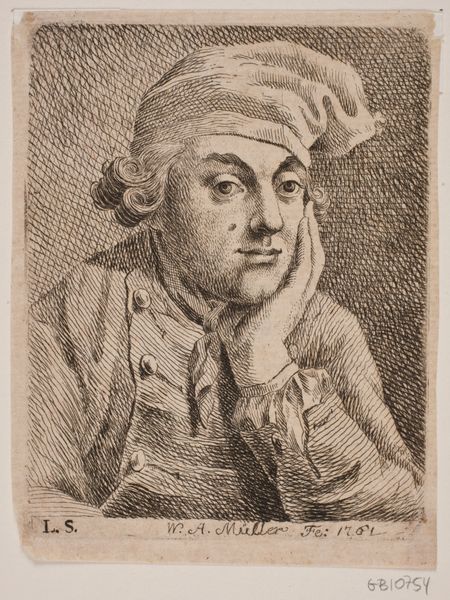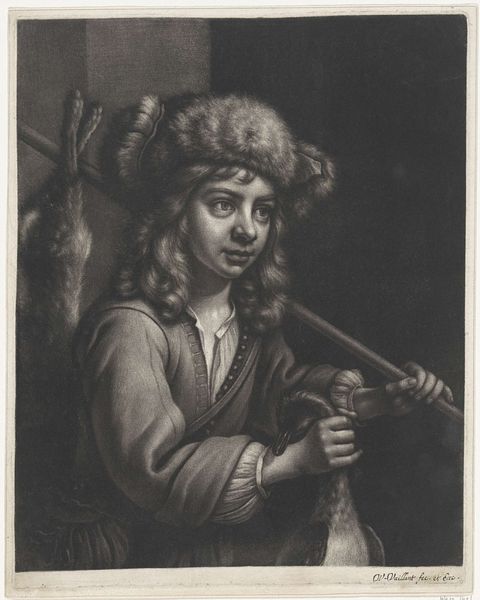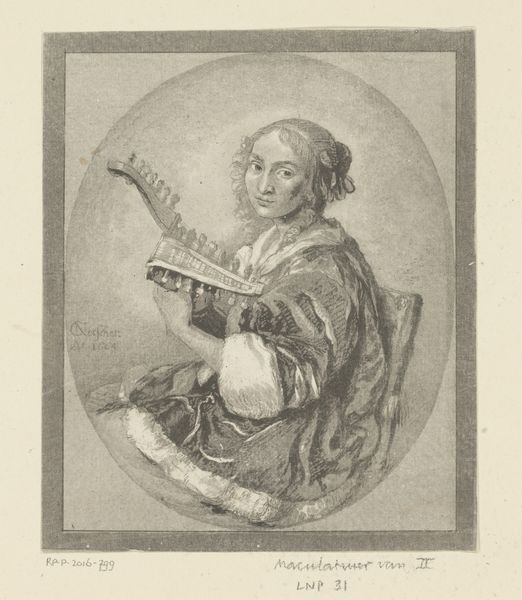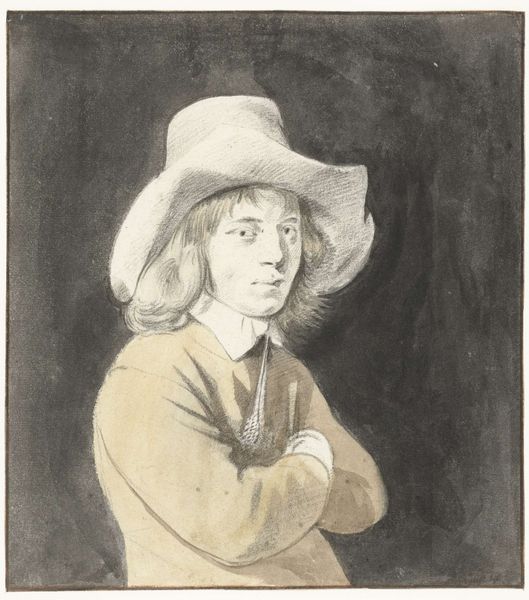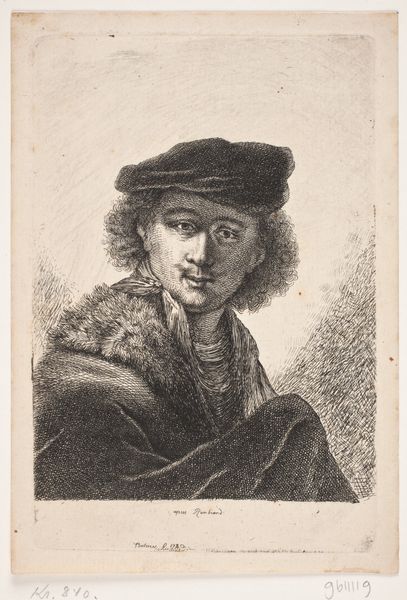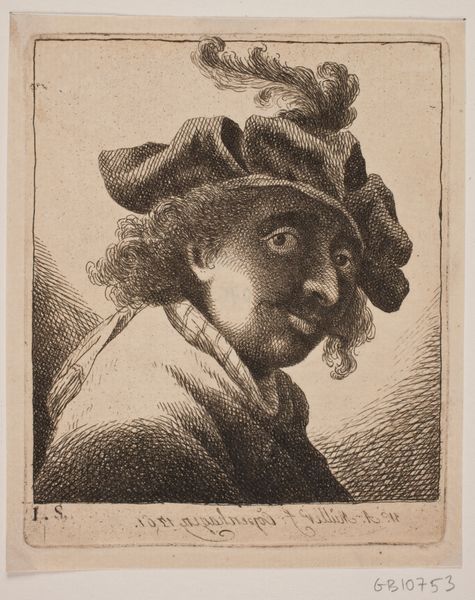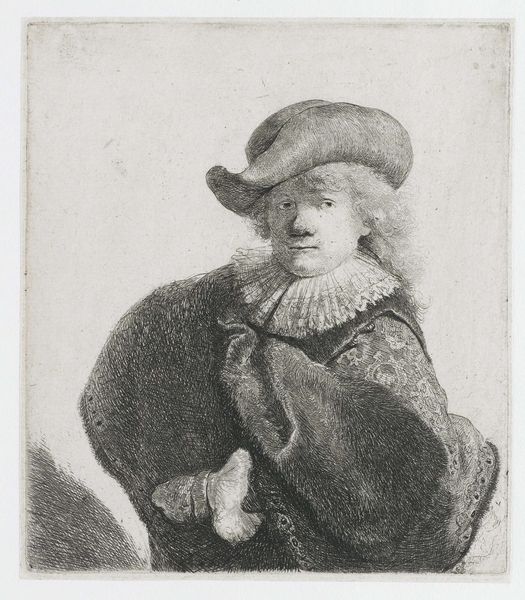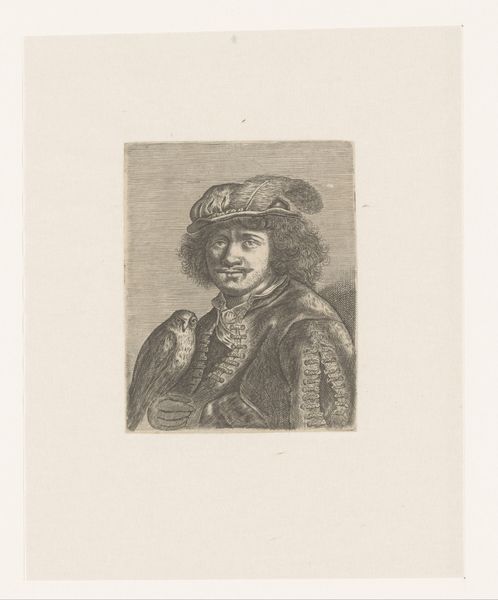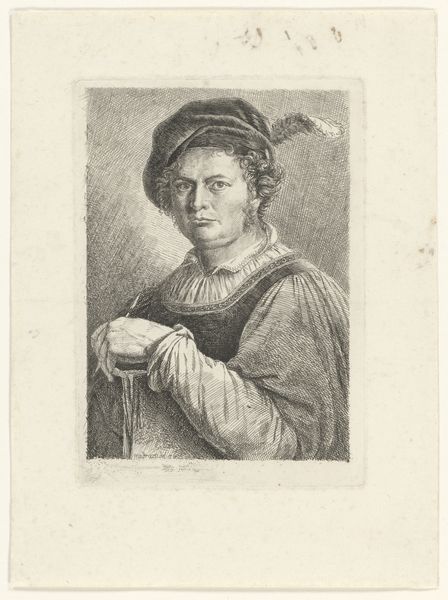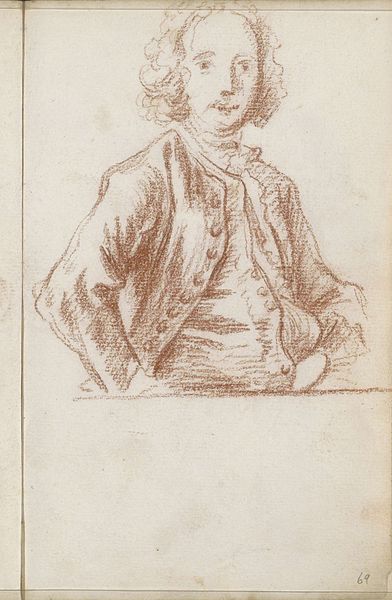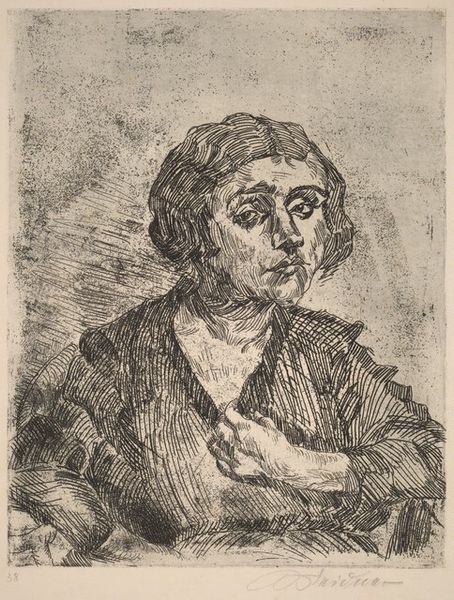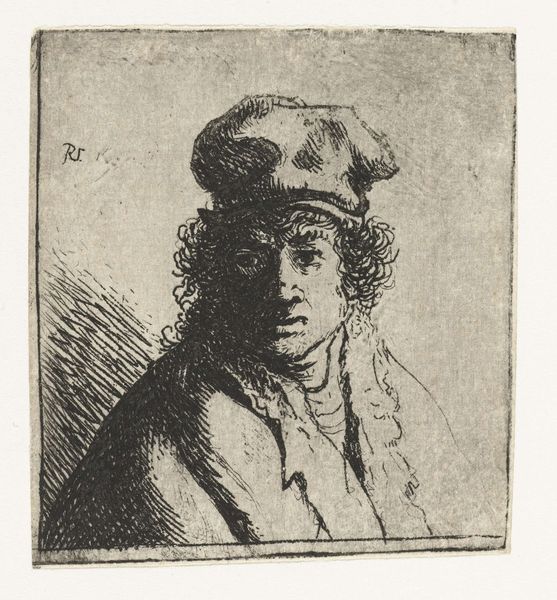
print, engraving
#
portrait
#
self-portrait
#
baroque
# print
#
engraving
Copyright: National Gallery of Art: CC0 1.0
Curator: What immediately strikes me is the almost hesitant quality of this portrait—the slight turn of the head, the gentle gaze. It evokes a sense of vulnerability, almost an intimacy that's unexpected in a historical portrait. Editor: I agree. And it's interesting to note that this is Wallerant Vaillant's "Self-Portrait." He was a prominent printmaker of the Baroque period, and what we see here is an engraving. Considering the public function of art in the 17th century, I wonder about his reasons for depicting himself this way, particularly given the societal pressures on artists for patronage and recognition. Curator: Exactly! The self-portrait inherently questions power dynamics, especially within the historical context of artistic patronage. Vaillant, rather than presenting himself in a grandiose manner typical of the time, chooses a softer approach. This challenges the traditional patriarchal representation of the artist. He doesn't demand respect; instead, he subtly invites engagement. I find it quite progressive. Editor: True. But we must also think about the very system of printmaking and art markets. These were often governed by guild structures that shaped artistic practice. Self-portraits were vehicles for asserting professional standing. Even in its seeming softness, the very existence of a self-portrait in print form broadcasts Vaillant's skill and marketability within the contemporary artistic landscape. Curator: A good point. However, it’s crucial to examine the sitter’s attire, too. The almost nonchalant arrangement of his cravat and hat seems carefully calculated, signaling an attempt to negotiate aristocratic ideals with an artist's freedom of expression. It invites consideration about how gender, identity, and performance intertwine. Editor: Looking at the medium itself, engravings enabled the widespread circulation of images. The subtle tonal range in the print creates depth, and this would have reached a diverse audience. We cannot ignore how this piece functioned in constructing both the artist’s identity and influencing public opinion about artistic roles and possibilities in the late Baroque era. Curator: I agree it functions as advertising. I am most moved, however, by its ability to prompt introspective questioning about societal and artistic roles. Editor: For me, understanding the social fabric in which this “Self-Portrait” came into being reveals a carefully crafted dance between artist, patronage, and the rise of a proto-modern art market. It shows us just how powerful visual media was in shaping careers and communicating identities.
Comments
No comments
Be the first to comment and join the conversation on the ultimate creative platform.
